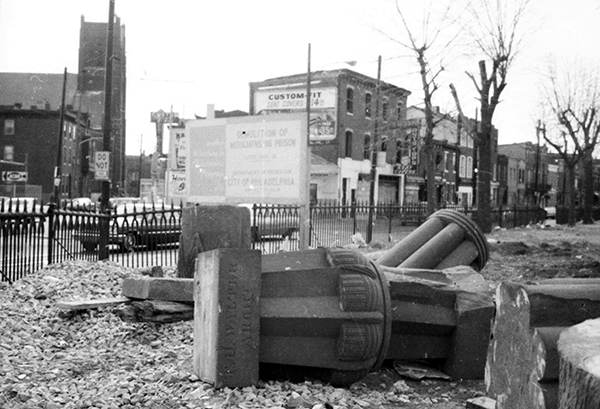In the decades after Napoleon invaded Egypt (as read in the previous post) any number of 19th-century architects adopted the Egyptian style. Philadelphians William Strickland, John Haviland, Robert Mills, Stephen Decatur Button, and Thomas U. Walter all lavished features from the Nile on increasingly eclectic façades in the 1820s, 30s and 40s.
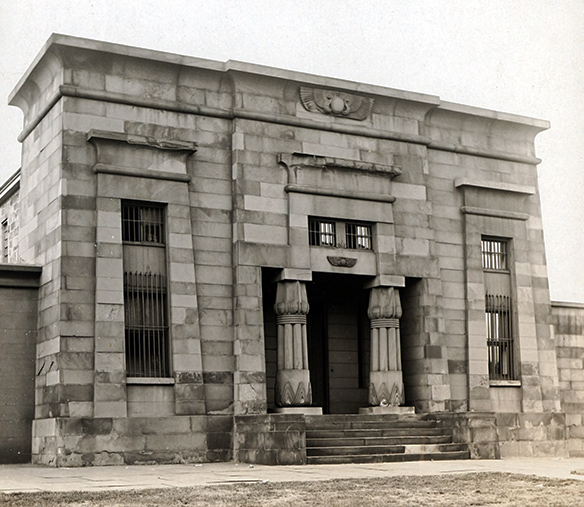
Sometimes we make attributions as to who was responsible for what, but in the case of the debtors wing at South Philadelphia’s Moyamensing prison, we know for absolute certain that it was Thomas U. Walter’s. There’s archival evidence. But there’s more. The architect’s name was literally carved in stone—on the building.
See the image above. No…really look at it. You can detect barely legible lettering on what was the protected, inward-facing, side of a brownstone Egyptian-revival column. Obtaining a TIFF file from PhillyHistory.org we were able to zoom in and read “T. U. WALTER, ARCHT.”—the architect’s signature, as it were.
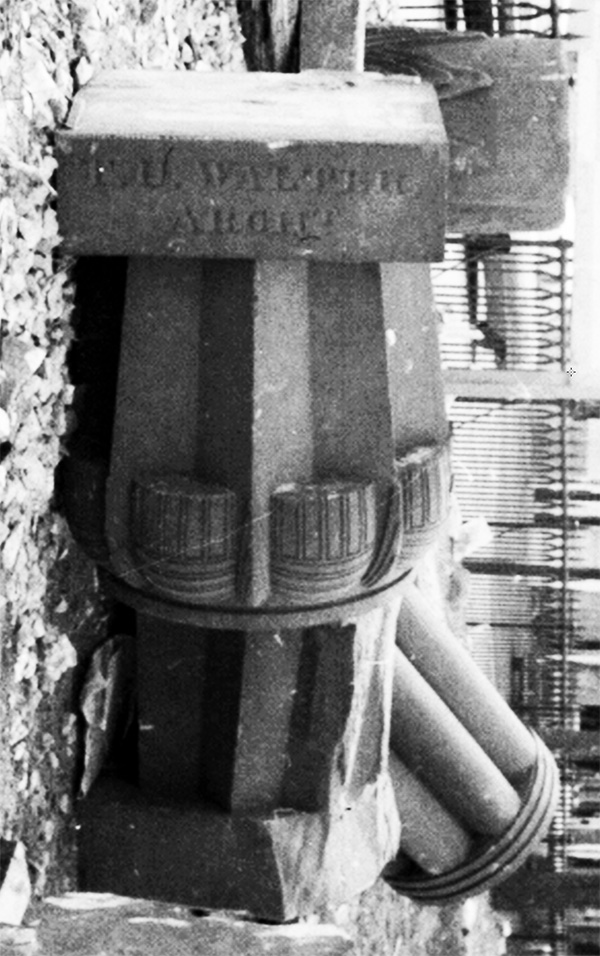
Ruins can speak! They share cryptic stories.
Has this tasty bit of ancient-modern archeology survived?
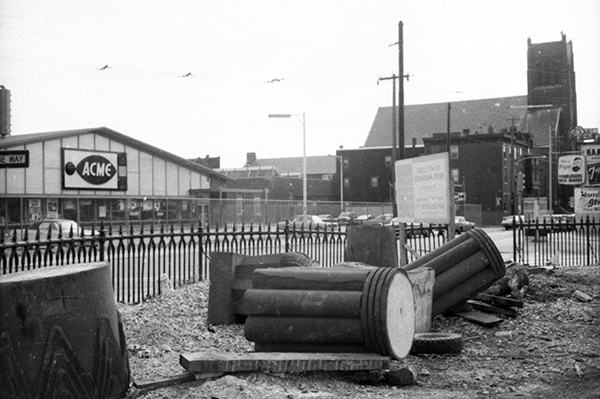
We read on one blog a rumor that the Smithsonian might be the steward of what’s left of the columns, but so far that does not seem to be the case. We did learn that the winged orb from over the entrance (below) does survive at the Athenaeum of Philadelphia, thanks to the late Penny Hartshorne Batcheler.
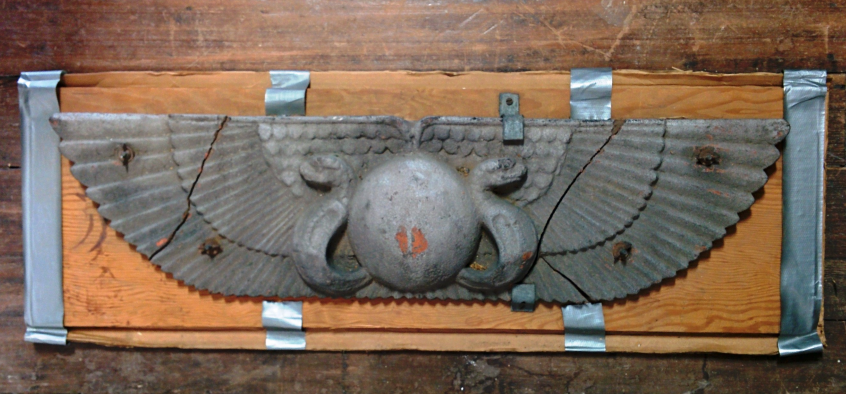
Dumpster diving at its best? Or a pioneering preservationist just doing some much-needed forensics?
Whichever, we say many thanks to Penny!

